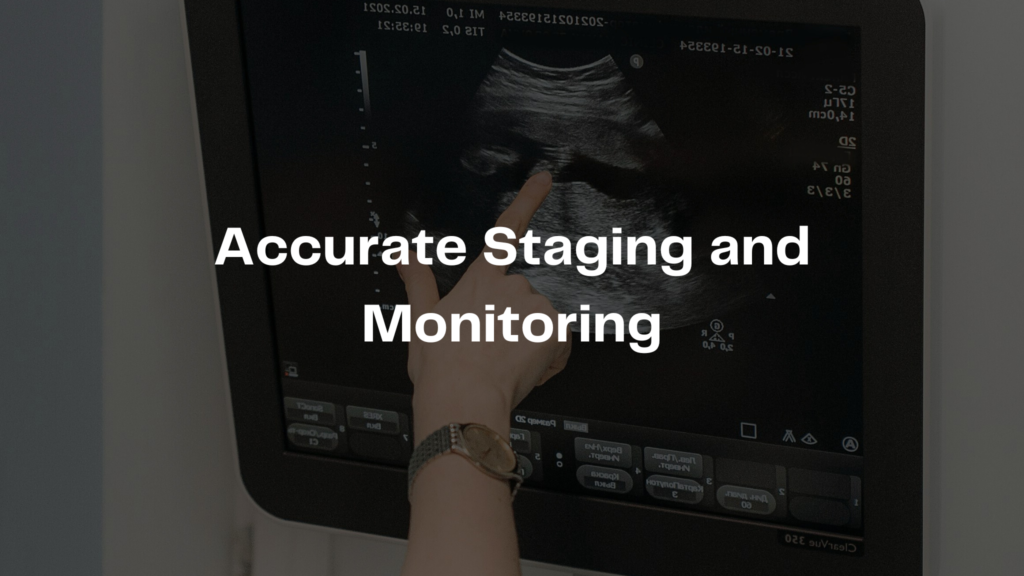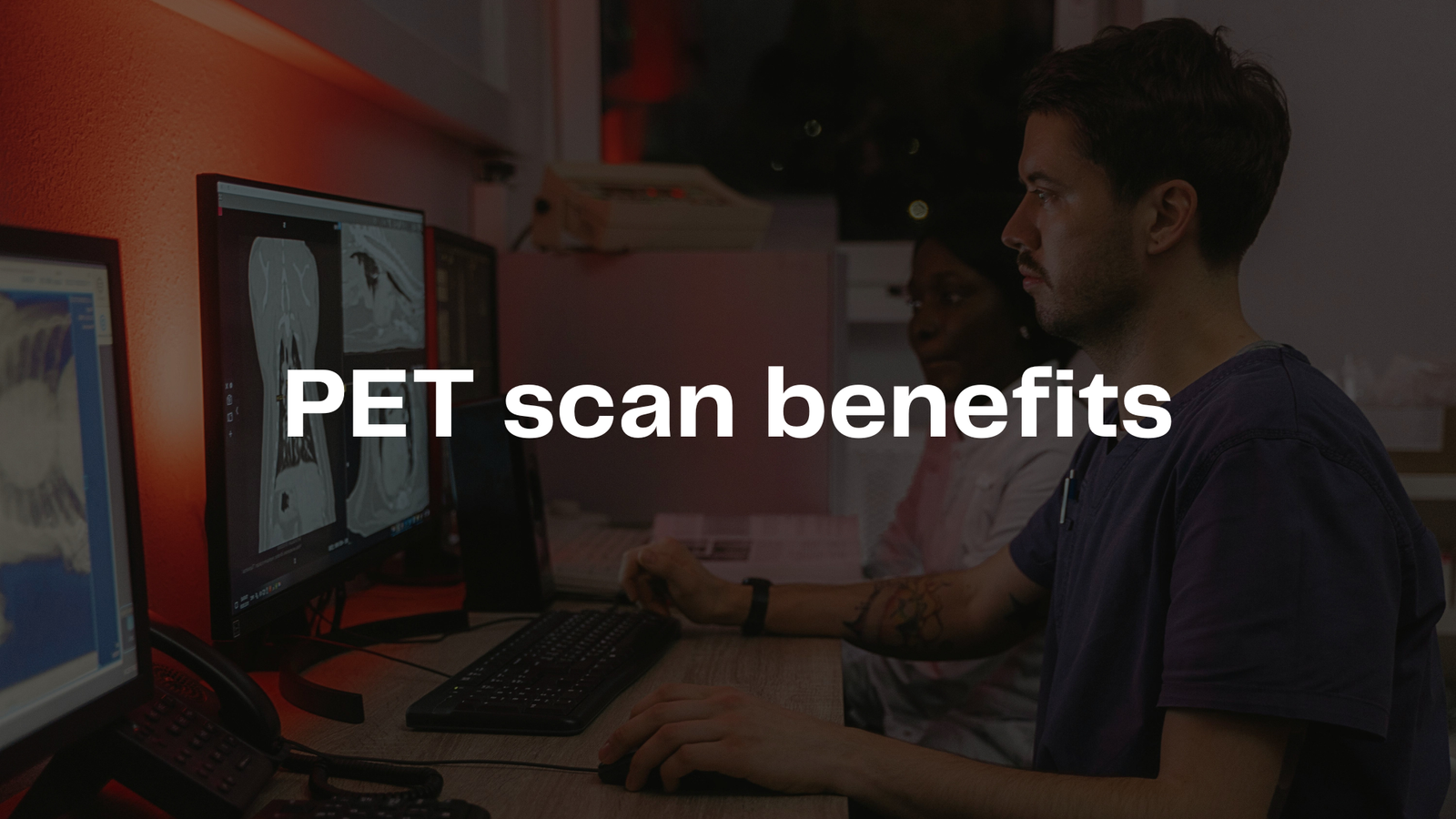Learn how PET scans help doctors find and treat diseases better, especially cancer, and improve your health.
When I think about PET scans, I picture a big machine that helps doctors see inside our bodies. It’s like having a superpower to look at what’s happening in our organs and tissues! PET scans can show if we’re sick, especially with diseases like cancer. They can even help find problems before we feel sick. Isn’t that awesome? If you want to know more about PET scan benefits and how they work, keep reading!
Key Takeaway
- PET scans can find cancer early, which is super important for getting better.
- They help doctors see if treatments are working or if they need to change plans.
- PET scans use lower radiation than other scans, making them safer for everyone.
Early Detection and Diagnosis
PET scans are like having a superhero that can spot trouble before it even starts. These scans take a close look at how our cells use sugar. Normal cells nibble on sugar, but cancer cells are greedy little monsters that devour it like there’s no tomorrow.
When doctors perform a PET scan, they can see these hungry monsters lurking, even when they’re just little blips on the radar. This is important because finding cancer early gives doctors a chance to treat it before it spreads(1).
- Early detection can lead to better treatment results.
- Patients who catch cancer early often feel better faster.
- Talk to a doctor about getting a PET scan if there are concerns about cancer.
By taking action and being proactive about health, patients can make a big difference in their outcomes. So, don’t wait! Ask questions, stay involved, and be your own health advocate.
Accurate Staging and Monitoring

PET scans are like having a super-duper map that helps doctors see where cancer has spread. This is what they call staging. When someone has cancer, knowing how far it has spread is super important. For example, let’s say a patient has prostate cancer.
A PET scan can show if the cancer has moved to other places, like lymph nodes or other organs. This information is like a treasure map that guides doctors on where to dig for the best treatment options.
Studies have shown that PET scans can be way more accurate than traditional methods, like CT scans. For instance, research indicates that PSMA PET/CT scans can find metastatic prostate cancer with a 92% accuracy rate. That’s impressive! It helps doctors make the right choices for their patients. They can plan the best course of action based on where the cancer is hiding(2).
Imagine a detective chasing clues. The more clues they find, the better they understand the mystery. That’s what staging does for doctors. It helps them figure out the best way to fight cancer. So, if someone is going through treatment, regular PET scans can help monitor how things are going.
They can see if the treatment is working or if the cancer is changing. This is super valuable information that helps doctors make decisions to help their patients feel better.
If you or a loved one is facing cancer treatment, it might be worth asking about PET scans. They provide vital information that can make a big difference in how doctors approach treatment. Staying informed and involved in health decisions is a smart move!
Assessment of Treatment Efficacy
PET scans are like a magic window into a patient’s body, showing how well their cancer treatments are working. Imagine a gardener checking on their plants after watering them. If the plants aren’t growing, maybe something needs to change. This is how PET scans help doctors keep track of cancer treatments. They can actually see if the cancer is shrinking, which provides vital information.
When a patient is undergoing treatment, the doctors might order a PET scan to monitor progress. If it shows that the cancer hasn’t shrunk, doctors can consider changing the treatment. This is super important because it means patients aren’t stuck with a plan that isn’t helping them feel better.
- PET scans show if treatments are effective.
- Doctors can adjust plans based on scan results.
- Early detection of treatment failure can lead to better outcomes.
This approach helps avoid unnecessary procedures and focuses on what works best for the patient. So, if someone is undergoing cancer treatment, talking to the doctor about getting regular PET scans can be a smart move. Staying informed can lead to better health results!
Reduced Radiation Exposure
Many people might worry about the safety of PET scans. But here’s a comforting fact: PET scans actually use less radiation than other imaging tests, like CT scans and MRIs. This means they’re generally safer for everyone, especially for vulnerable groups like young children and pregnant women.
The introduction of new technology, such as the Total Body PET scanner, has made PET scans even safer. It’s like wearing sunscreen to protect your skin from harmful sun rays. By using less radiation, doctors can ensure that patients are exposed to the minimum amount necessary.
- PET scans use lower radiation levels than CT and MRI.
- Total Body PET scanners enhance safety even further.
- Less radiation is especially good for kids and pregnant women.
By getting regular check-ups and scans, patients can monitor their health without worrying about too much radiation. If someone needs a PET scan, they can feel relieved knowing that it’s a much safer option. Always remember to talk with your doctor about any concerns. After all, knowledge is power when it comes to health!
Comprehensive Whole-Body Imaging
PET scans have a special ability they can look at the entire body at once! This means that doctors can see everything happening inside, not just focusing on one area. It’s like having a magic window that opens to reveal all the secrets of health hidden within. Imagine how helpful this is! If a doctor needs to check the brain, the heart, or any other organ, a PET scan can provide that information in one go.
This kind of comprehensive imaging is incredibly valuable. It helps doctors find out if a person is healthy all over or if something might be wrong. New facilities, like the Australian National Total Body PET Facility, are making this imaging even better. With advanced technology, these scans can provide clearer pictures of what’s going on inside.
- PET scans assess the whole body, spotting issues early.
- They help in monitoring conditions across different organs.
- New technology improves image clarity and accuracy.
For anyone needing health checks, it’s a good idea to ask about PET scans. They can catch problems early and help ensure everything is functioning well.
Improved Patient Experience
Waiting for a scan can feel like watching paint dry it’s not fun at all. But luckily, PET scans are getting much faster! Now, some scans can take less than 30 seconds. That’s super quick compared to other tests! This is great for patients who might feel anxious or uncomfortable. It’s like waiting in line for a fun ride at the amusement park, but much shorter!
A shorter scan time makes a big difference, especially for kids. Imagine a nervous child lying on an exam table, waiting and worrying. But with a quick scan, they can be in and out before they even have time to feel scared. This efficiency improves the overall experience, making it easier for everyone involved.
- Fast scans reduce patient anxiety and discomfort.
- A quick procedure helps kids feel more at ease.
- Less waiting time means better overall satisfaction.
So, if someone is scheduled for a PET scan, they can feel relieved knowing it won’t take long. Quick scans are a win-win for patients and doctors alike!
Individualised Treatment Approaches
The way doctors treat patients today is much smarter than it used to be. They’re now using PET scans along with other tests to create a unique treatment plan for each person. This is called individualised treatment. It’s a bit like how everyone has their favourite ice cream flavour. Some might love chocolate, while others prefer strawberry.
When a patient has a specific kind of cancer, their doctor can choose a treatment that works best for them.
For example, if a patient has breast cancer, doctors might look at the PET scan results and see how the cancer is behaving. If it’s aggressive, they might choose a stronger treatment. But if it seems to be slow-growing, they might opt for a less intense approach. This personalised way of treating patients means they get the best care possible.
- Individualised treatment plans are based on PET scan results.
- Doctors can choose the most effective treatments for specific cancers.
- This approach improves patient outcomes and chances of recovery.
By creating these tailored plans, doctors help patients feel more hopeful. It’s all about finding the right path to health. I think this makes patients feel more involved in their own care too. So, if someone is facing cancer treatment, they should definitely ask their doctor about personalised options. Being informed can lead to better health journeys.
Conclusion
To wrap up, PET scans are super important for keeping us healthy. They help find cancer early, show if treatments are working, and they use less radiation than other scans. Plus, they make the whole experience quicker and easier for patients. With all these benefits, it’s no wonder PET scans are becoming a big part of healthcare in Australia.
If you ever need a scan, now you know just how helpful they can be! So, drink plenty of water and rest quietly before your appointment, and remember, you’re doing this for your health!
FAQ
How does PET scan work with CT or MRI scans to create detailed images?
PET scan combines with CT scans or MRI scan to produce detailed images of organs and tissues. The scanner uses small amounts of radioactive tracers to show metabolic activity in your body. When paired with CT imaging or MRI scans, doctors get both functional and structural views of your body’s systems.
What happens during a total body PET scan procedure?
You’ll change into a hospital gown and rest quietly on the exam table. The nuclear medicine technologist will inject a small amount of liquid radioactive material into your vein. The total body PET scanner captures how organs are working as you lie still in different bed positions. The entire scanning time varies based on the type of scan.
How does PET scanning help diagnose cancer and heart disease?
PET scanning helps doctors spot cancer cells and assess heart muscle damage after a heart attack. The scan shows sugar metabolism and blood flow patterns in organs and tissues. It’s particularly useful for detecting lung cancer, breast cancer, and colorectal cancer, plus evaluating lymph nodes for metastatic cancer.
What preparation is needed for a PET scan?
Your specialist doctor will review your medical history and provide specific instructions. You’ll need to avoid eating for several hours and drink plenty of water to help flush the radioactive material. If you’re pregnant, breastfeeding, or have young children, tell your healthcare team for radiation protection guidance.
How long does a PET scan take and what about radiation exposure?
A conventional PET scan takes a short time, usually 30-45 minutes depending on the scan range. The radiation dose is low compared to other imaging tests. The radioactive tracers used in nuclear medicine procedures contain only small amounts of radiation, similar to background radiation we encounter daily.
What are the latest advances in PET imaging techniques?
Modern PET scanners offer higher sensitivity and better image quality with shorter acquisition time. Dynamic PET imaging and parametric imaging improve lesion detection and provide more accurate diagnosis. These imaging techniques allow for better spatial resolution and help reduce false positive results in routine clinical practice.
What happens after the PET scan procedure?
After your nuclear medicine imaging test, you can usually return to normal activities. You’ll need to drink extra fluids to help flush the radioactive substance from your body. The nuclear medicine staff will advise you to avoid close contact with others for a short period, following nuclear safety guidelines.
How do doctors interpret the PET images for diagnosis?
Nuclear medicine specialists analyse PET data and PET images to assess metabolic activity and identify areas of FDG uptake. They look for abnormal patterns that might indicate medical conditions. The quality of the images helps them evaluate small lesions and determine if cancer has spread to distant metastases.
References
- https://www.prostate.org.au/testing-and-diagnosis/grading-genetics/the-role-of-psma-pet-ct/
- https://www.sydney.edu.au/news-opinion/news/2023/12/12/new-medical-imaging-facility-to-revolutionise-research-and-patie.html




